
Google Sites provide us and our students with the ability to create beautiful web pages. There are so many other ways to use this tool. Here are tons of tips and tricks you might be surprised to know!
Google Sites has been around for a long time and a few years ago Google Sites got a major update. Since then many more user-friendly features have been added to this fantastic web page-creation tool.
In a past #Ditchbook Twitter chat educators shared their best tips for using Google sites in and out of the classroom along with tons of great tricks you might not have even heard about yet. Since then we have added even MORE tips, tricks and tutorials to get you started with Google Sites along with ways to help you and your students get the most out of Google Sites.
Getting started with Google Sites
If you haven't used Google Sites before then you're in for a treat. Google Sites are simple to create and allow you to easily drag and drop content from your Google Drive.

The Google for Education training center has loads of tips, tricks, lessons and more for helping you get started with Google tools. Check out the links to resources below.
Google Sites tutorials for students
Google's Applied Digital Skills curriculum provides tons of FREE instructional videos teach students to collaborate using digital skills. You can search their curriculum by audience, digital tool or topic.
Check out just some of the ready to use Google Sites lessons available for you to use with your class.
Google Sites templates
Google has some pre-designed templates for you to use. Here's how to find them:
1. Go to sites.google.com/new
2. In the upper right hand corner click on "template gallery"
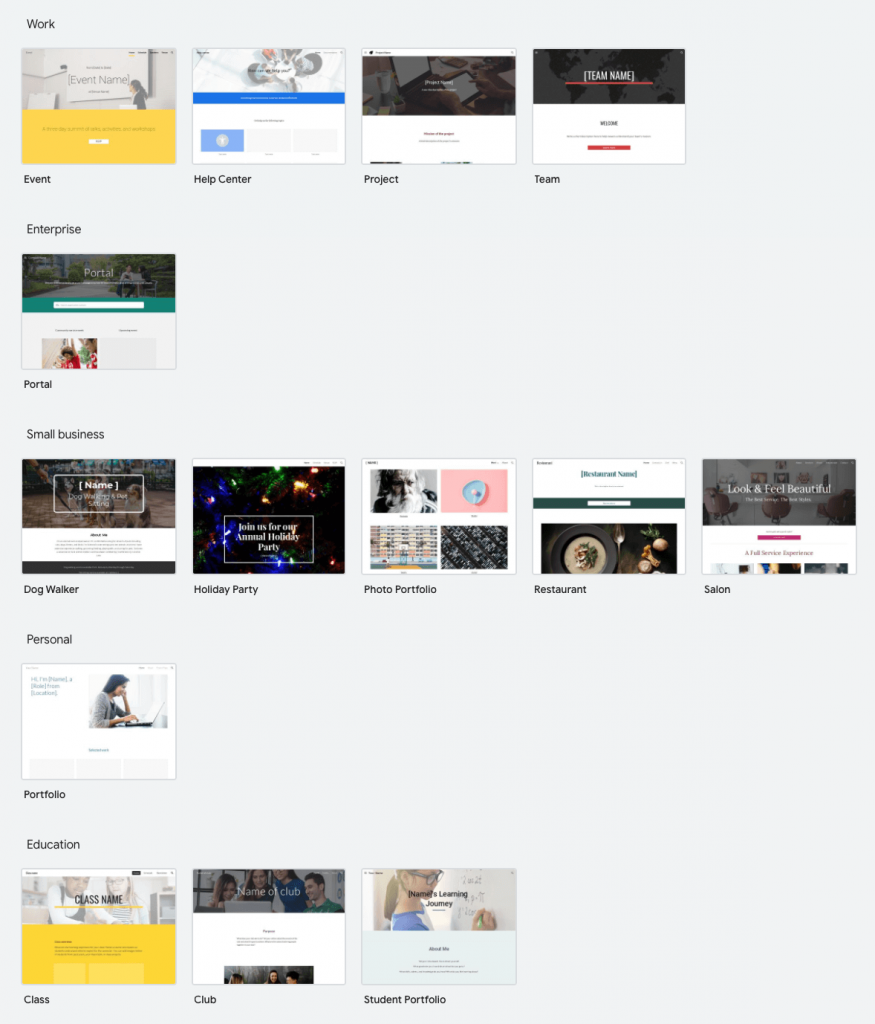
Sites templates are organized by category.
- Work
- Enterprise
- Small business
- Personal
- Education
Click on the template that you would like to use and start creating your Google Site!
Tech Like A PIRATE encourages teachers to provide those experiences by tapping into technology that grabs students’ attention immediately and redefines learning. We dive into 7 ways to grab your students' attention with technology including resources you can use TOMORROW.
Using Google Sites in the classroom
1. Provide a whole unit with resources.
It can get messy to try to keep sharing resources with students during a whole unit of study. Packaging them in a site allows for easy updates and sharing of ideas.
A1. I used it to provide a whole unit with resources. Ss created projects based on directions on site. Since it’s easy to edit we could be fluid with directions when Ss had ideas. #ditchbook https://t.co/6zcWAIEdp0
— Rayna Freedman (@rlfreedm) November 15, 2019
2. Package your HyperDocs.
Google sites can be used to package large units like novel HyperDocs. All the links and resources they need to complete the work are all on the site. You can find 25 ready to use Novel HyperDocs for your class in this post.
A1.b Our friend @MsMarshallCMS uses sites to package her novel #hyperdocs. Check out this one for The Wild Robot #Ditchbookhttps://t.co/B5udisRXbu
— Karly Moura (@KarlyMoura) November 15, 2019
3. Use Google Sites to supplement Google Classroom.
Use subpages in Google Sites to package content for your students. The website link can be added to an assignment in Google Classroom for students to easily reference during their work.
Check out The Google Classroom Quick-Start Guide + resources, tips and tricks! for all you need to get started using Google Classroom.
A1: I love Google Classroom, but having multiple topics with multiple posts can flood the classwork section. I have found that using pages with subpages in a Google Site is a much cleaner and easier way to package content for students to navigate. #ditchbook
— 𝙳𝚊𝚗 𝚂𝚝𝚒𝚝𝚣𝚎𝚕 (@mr_stitzel) November 15, 2019
4. Teach students (and staff) about new tools or procedures.
Sites provides an easy way to house all of the tips and tutorials that users might want to reference while learning something new.
A1: I love creating Sites for our students when we have new initiatives or procedures. Our MTSS structure is a great example Ss were able to visit that site and receive updates and announcements on where to go, how the procedures were laid out, all in an easy format! #ditchbook
— Evan Mosier (@emosier3) November 15, 2019
5. Get gamified with digital escape rooms.
Digital escape rooms are a fun way to introduce, practice or review content and a Google Site provides the perfect "room" for all of your clues and locks. Learn all about how to create a digital escape room for your students in this post.
A1: I like to package escape rooms using Google Sites #ditchbook
— Mandi Tolen (@MandiTolenEDU) November 15, 2019
Want to use digital escape rooms to spark your students' imagination?
Check out our Getting Started with Digital Escape Rooms online course!
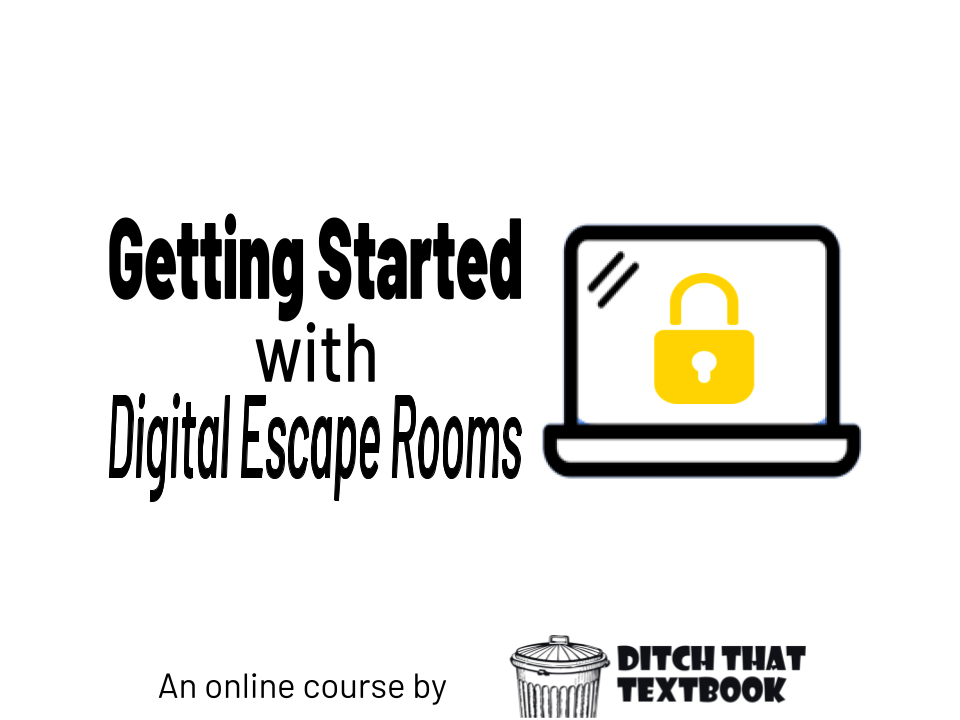
For just $19 you'll get:
- Video tutorials to guide you in getting started
- PDF guides to help you plan
- LOTS of example escape room ideas you can use as inspiration
- 25 digital escape rooms with lock combinations and companion resources in a downloadable PDF
- A step-by-step companion website with templates to help you and your students create your own digital escape rooms
- A resource locker FILLED with BONUS resources
6. Give students access to school from home.
Posting material on a class website gives students the opportunity to access material from home. Also a big plus for parents trying to help their students! Visit our eLearning page has even MORE resources for teaching students remotely.
A2: Google Sites can be used by the students to look up answers to homework, if they are stuck or even help them to study/prepare for a quiz or even a test upcoming. #ditchbook
— Joshua Otto (@The_Mr_Otto) November 15, 2019
7. Have students create sites for classmates.
Creating a useful website is a valuable skill. Have students create their own website to share information with classmates or club members.
A2: My scholars use it to build their portfolio for Applied Library Media Studies. The Friends of the Library club is using it as their platform to keep members informed. #DitchBook https://t.co/TETkjoqKM2
— Kate Applebee (@K8Applebee) November 15, 2019
8. Show what you know with Google Sites.
Give students the option to create their own site to demonstrate their learning after a lesson or within a unit.
A2: Students can use this as a choice to demonstrate their learning. The beauty of Sites is that since it's all drag and drop, Ss can easily embed their own content, videos from YouTube, or links to other resources. #ditchbook
— Evan Mosier (@emosier3) November 15, 2019
9. Make your site interactive with the embed feature.
You can use a URL or embed code to add to your website. Embedding an interactive Padlet allows your students to add content to the site and even comment on their classmate's work without being a contributor to the site.
A3: Embedding an interactive @padlet into a Google Site increases engagement and interaction. #ditchbook
— Tom Sweeney (@trsweeney44) November 15, 2019
10. Use a Google Form inside a site for easy access to a daily check in.
We want to connect with our students and know how they are doing every day. But it can be difficult to check-in with every student in every one of our classes. Embedding a Google Form inside of your site makes it simple and easy to get started connecting with all of your students. Find an example Google Form check-in template here.
A3: I use a site as my "home base" in the classroom. During instruction, I navigate through all of my material and content through a site, so everything I need is accessible. I also embed a Form for students to "check in" at the board in the AM #ditchbook
— Dylan Borkowski (@DylanBorkowski) November 15, 2019
Tips and tricks for using Google Sites
11. Make a copy of a site.
The new Google Sites allows you to make a copy of a site. This is a useful feature if you want to share a site with someone to collaborate but don't want to lose your original site. Also great for making templates of site designs you use often.
A3: New Google Sites let's you make a copy! Create one and if you like how your creation but don't want to redo...make a copy! #ditchbook https://t.co/BlFWX9ewza pic.twitter.com/ba92u4aT9g
— James Varlack 🇬 (@jamesvarlack) November 15, 2019
12. Share pictures easily with image carousel.
Inside of your Google Site on the right hand menu select "Insert" then "Image Carousel" to upload and select the images you want to share. You can even resize the carousel frame to the size you want.
A3: Picture Carousel in Google Sites is a great way to share pictures in a concise, organized, and user friendly format. #DitchBook
— Tom Sweeney (@trsweeney44) November 15, 2019
13. Use an incognito window to test your settings
If you are the owner of the site and the images and embedded resources it can be hard to know which ones are shared and which ones are still private. Checking your site in an incognito window allows you to see what your students or families will see.
A3: Check it in an Incognito Window and try every thing! Has saved me from having frustrated scholars because I am able to fix sharing settings before they encounter blocked access. #DitchBook https://t.co/QbujRWkY2k
— Kate Applebee (@K8Applebee) November 15, 2019
14. Look more professional with the button tool.
A button can look so much better than a simple hyperlink. Try it on a new Google site by clicking on "Insert" then scroll down to find the button option. From there you can add a name for your button and a URL or site page to link to.
A3: I love the button tool for links. Makes it look so much more streamlined. I like to curate resources into a site for students to use on research projects. Also great for creating staff resource pages too! #ditchbook
— Andrea (Thurmes) Ibberson (@EdTechIbby) November 15, 2019
15. Show only the content you want by hiding.
If you want to create the content just for yourself or if you are planning to release it later you can hide a page from navigation so that others can't see it even when it's published. Go to "Pages" then use the three dots next to the page name to choose "Hide from navigation".
A3: The hide feature! I can build the pages all at once but hide the ones I dont want them to go to yet. #ditchbook https://t.co/4t2Jf2aX9H
— Ⓚⓔⓔⓛⓔⓨ Ⓑⓐⓡⓡ (@KeeleyBarr) November 15, 2019
16. Add a favicon!
Make your site even more personalized by adding a favicon. Just click on the three dots in the top edit menu and choose "add favicon". You can add your own image or search for one to use.
A3 #ditchbook
— Sean Fahey (@SEANJFAHEY) November 15, 2019
I also like how you can add a logo to the site navigation bar and favicon to Google sites. It can really help give sites a personal and professional look.
17. Create a Google Slides template.
On episode 83 of the Google Teacher Tribe Podcast Joe Marquez shows us his hack for creating a template in Google Sites. Listen to the episode below!
A3 #DitchBook
— Sean Fahey (@SEANJFAHEY) November 15, 2019
I love this hack that @JoeMarquez70 shared on How to Create Google Sites Templates with Joe Marquez - GTT083 - Google Teacher Tribe Podcast https://t.co/3tiz4XsUXD
18. Insert collapsible text boxes.
A brand new feature added to Google Sites now allows you to insert collapsible text boxes. Check out this Google Blog post to learn more about this awesome new feature!
#DitchBook did you see this new feature of google sites? Just came out within the past couple of weeks
— Sean Fahey (@SEANJFAHEY) November 15, 2019
G Suite Updates Blog: Insert collapsible text boxes into new Google Sites https://t.co/Xg3CtFOFeV
Bonus! A Site full of Sites tips and tricks!
Check out this Google Sites tips and tricks presentation created by Raul Cortez. TONS of great stuff here!
A3: Recently presented on my Sites tips and tricks which you can check out on my Google Site: https://t.co/8ehn273SE4 #ditchbook
— Raul Cortez (@istaylearning) November 15, 2019
Taking Google Sites beyond the classroom
19. House all of your professional resources in one place.
A Google Site is a great way to showcase the work you have done as a professional educator. Whether you're preparing to change positions or want to share your resources all in one place a Google Site provides a simple and free way to package it all. Here is an example professional development website from Karly Moura.
A4 I like to collect all my professional "proof" of the work I do at school for work evals on a site. So simple. I also like to now house all my presentations I give at conferences or PDs. I can duplicate it and make it event specific in a snap too! #DitchBook pic.twitter.com/QUjmCDad8P
— Michael Wesely (@TechWarriorKES) November 15, 2019
20. Take your sites skills out into the world!
That pre-school meet-up group, your son's swim team, a book club are all fantastic groups that might be looking for a way to easily share information and resources. Wow them with you Google Sites know-how and help your group get organized.
A4: Uses for Google Sites beyond the classroom ...
— Matt Miller (@jmattmiller) November 15, 2019
- Home base for clubs, activities, sports teams
- Create a parent portal with info, class photos, contact info
- Outreach from the front office with news, documents, info#DitchBook
10 things teachers need to know about Google Sites
And if you’d like to see them in motion, I’ve created a walkthrough video of all 10 (see below or click this link to see it on YouTube).
1. Click and drag content where you want it.
This is the biggest improvement of all with Google Sites. It was so clunky and difficult to get content where you wanted it on the page before. Now, all you need to do is click the item you want to add (text box, image, etc.) and then drag it around on the page.
2. Share to let others edit it with you.
There’s a button next to the “Publish” button that lets you add what they call “editors.” If you want a fellow teacher (or if students want others in their group) to edit the site, using this button lets you give others permission easily. Just add them with their email address — or even make an “Everyone with the link can edit” link you can share with others.
3. Predesigned themes.
The new Google Sites makes attractive design pretty easy with themes. These are prepackaged, ready-to-go website designs you can change with a click of the mouse. They’re available at the top of the right-hand sidebar in the “Themes” tab.
4. Embed from Google.
Embedding is taking interactive elements from a website and putting them on your website. Google Sites makes it easy with three options: YouTube, Calendar and Map. Click one of those buttons to stick a live, dynamic (works on your site without going to another site) video, calendar or map on your site.
5. Display your site nicely on any device.
Google Sites features what web designers call “responsive design.” That means it customizes your text, images and other elements to look good on any device — computer, tablet or smartphone. This will give you the confidence that if a student or parent views a site that it won’t show up funky because they’re viewing it on mobile. (More info on responsive design here.)
6. Add interactive Google files on your pages.
Want to add a slide presentation to your page where you can click through the slides? Or a document where you can scroll through the pages? A single click will do it, letting you pick a file from your Google Drive to stick on the page. This goes for Docs, Slides, Sheets, Forms and Charts. (If you want to use a Google Drawing, you can always save it as an image file (File > Download as > JPEG) and add it to your site as an image.)
7. No file cabinet page or sharing pages privately.
One gripe that many people have with the new Google Sites is that the cabinet page has disappeared. This page type created a page with a list of files on the site. In the new Google Sites (as of publication of this post), that’s not available. (However, it’s pretty easy to link to Docs, Slides, Sheets, Forms and Charts now — see No. 6 above — so that’s not too bad.)
A second gripe is that you can’t give custom permissions for pages and sites like you could with the old Google Sites. If that’s a deal breaker for you, you can continue to use the old Google Sites for a while. (And maybe, by the time the old Google Sites disappears forever, they will have updated the new Google Sites with those features!)
8. Create project websites, not just projects.
When students create projects, we often don’t give their hard work much of an audience. Usually it’s just the class (or worse, just the teacher). If they create their work on a Google Site, they can showcase their hard work to a larger audience — anyone they share the link with to their website.
9. Create a parent portal.
This is an easy way to keep parents in the loop with what’s happening in the classroom. Create a site with all the info parents want, like contact information, the calendar of assignments from Google Classroom, photos and video from class, and more. Make sure to update it regularly to give them a reason to keep coming back!
10. Create a video course/repository.
When students work on class activities, occasionally they need a refresher on certain topics they’ve learned before. (OK, more often than occasionally!) Consider creating a website with lots of embedded videos that cover these topics. If they need a reminder, you can easily say, “Go watch that quick video on the website.” Plus, if parents are helping them, they might need a quick refresher — or a video can show them the specific way you’re having students do the work (think math concepts that can be taught multiple ways by different teachers!).
For notifications of new Ditch That Textbook content and helpful links:
Are you looking for quality, meaningful professional learning that both equips and inspires teachers?
Matt provides in-person and virtual keynotes, workshops and breakout sessions that equip, inspire and encourage teachers to create change in their classrooms. Teachers leave with loads of resources. They participate. They laugh. They see tech use and teaching in a new light. Click the link below to contact us and learn how you can bring Matt to your school or district!
Is Matt presenting near you soon? Check out his upcoming live events!


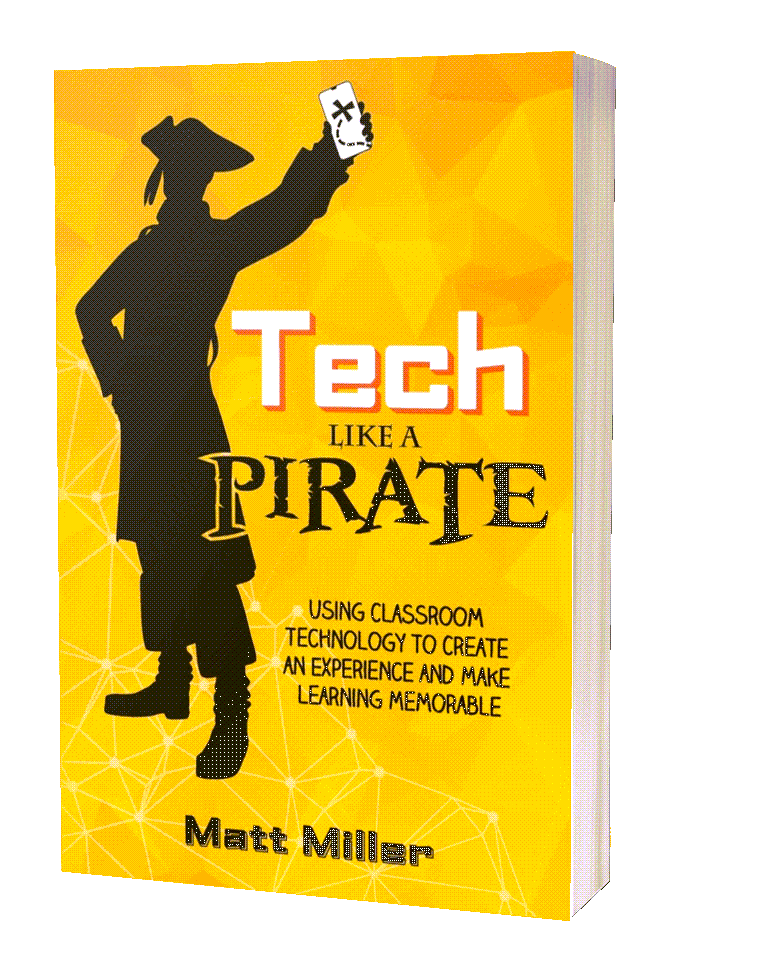
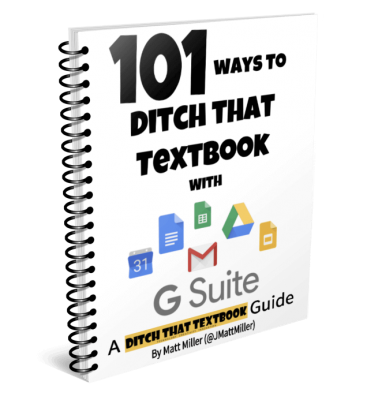


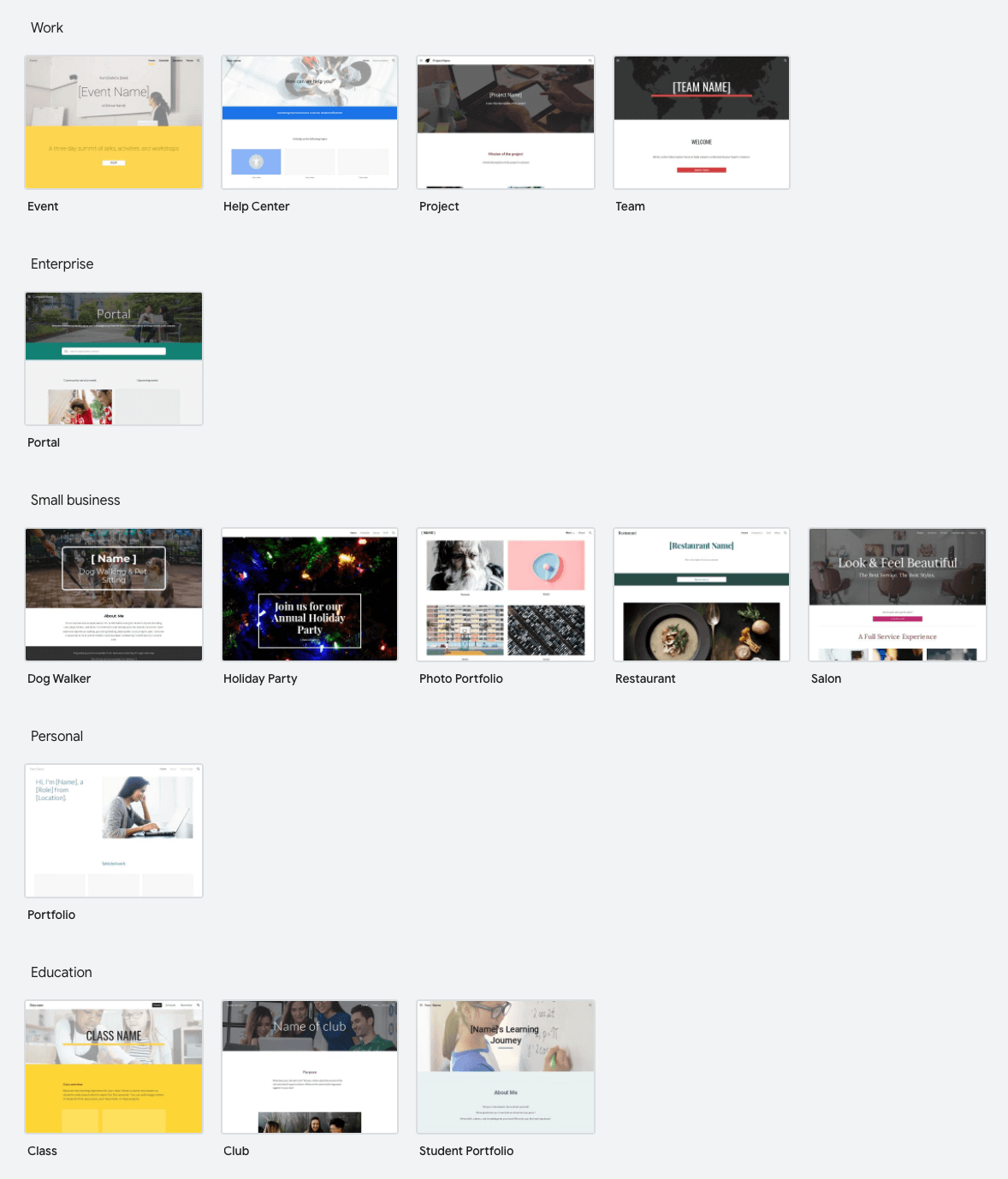
Thanks for your Information:
A scholarship is a type of financial aid or grant given to students to help them pursue their education, typically at a college, university, or other educational institution Visit Website
Sir, Very informative blog and useful article thank you for sharing with us.
Very informative blog and useful article thank you for sharing with us.
Sir, Thank you so much for provided a valuable information.
Sir, Thank you so much for provided a valuable information.
Thanks for posting an excellent article. Your site has provided the best information.
A great piece that sheds much needed light on Mobile App Development Company and its impact on business as there are many new details you posted here. Sometimes it is not so easy to build a “Mobile App” without custom knowledge; here you need proper development skills and experience. However, the details you mention here would be very much helpful for the beginner. Here is yet another top-notch solution provider “X-Byte Enterprise Solutions” who render feasible and credible solutions to global clients.
Know more here: https://www.xbytesolutions.com/blog/mobile-app-development-tips-tricks-and-tools
Thanks for a very comprehensive and informative blog! Should you need additional reference I hope you consider adding this link to your list : http://www.justlearn.com/
very helpful Blog .Your article Awsome.Thanks for this information,very imformative as well as modern .
exercise to lose belly fat; fat loss extreme; workouts to lose belly fat; best foods to eat to lose weight; diet for weight loss for female; dr now diet plan; simple 1200 calorie meal plan; meal plan for weight loss and muscle gain female; 1200 calorie a day meal plan; lifting weights to lose weight; foods to eat to lose weight; lunch for weight loss; healthy lunch for weight loss; healthy foods high in fat; Detailes -https://behealthyideas.com/
exercise to lose belly fat
[…] Here are 20 Google Sites tips and tricks […]
[…] Students can write in documents. But what if they create a website instead? Share the link with others to spread the goodness around! Click here to learn about Google Sites! […]
[…] 20-google-sites-tips-and-tricks […]
[…] Read the full story by Ditch That Textbook […]